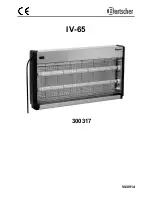
GEM Module Hardware Integration Guide
Version 0.3
Wahoo Fitness
15
90 West Wieuca Road, Suite 110
Atlanta, GA 30342
www.wahoofitness.com
1-‐877-‐978-‐1112
Federal Communication Commission (FCC) Radiation Exposure Statement:
This device is in compliance with SAR for general population/uncontrolled exposure limits
in ANSI/IEEE C95.1-‐1999 and had been tested in accordance with the measurement
methods and procedures specified in OET Bulletin 65 Supplement C.
This transceiver must not be co-‐located or operating in conjunction with any other antenna,
transmitter, or external amplifiers. Further testing / evaluation of the end product will be
required if the OEM’s device violates any of these requirements.
The user manual for end users must include the following information in a prominent
location “IMPORTANT NOTE: To comply with FCC RF exposure compliance requirements,
the antenna used for this transmitter must be installed to provide a separation distance of
at least 0.5 cm from all persons and must not be colocated or operating in conjunction with
any other antenna or transmitter
The GEM Module is fully approved for mobile and portable applications.
FCC Labeling Requirements
WARNING: The OEM must ensure that FCC labeling requirements are met. This includes a
clearly visible label on the outside of the OEM enclosure specifying the appropriate FCC
identifier is visible.
Contains
FCC ID: PADWF111
IC: 10563A-‐WF111
If OEM device is larger than 8x10cm, the following FCC part 15.19 statement has to be
visible on outside of device:
The enclosed device complies with Part 15 of the FCC Rules. Operation is subject to the
following two conditions: (1) This device may not cause harmful interference, and (2) This
device must accept any interference received, including interference that may cause undesired
operation.
Label and text information type should be large enough to be legible and consistent with the
dimensions of the equipment and the label. The type size is not required to be larger than
eight points.
Comments
The OEM should have their device tested by a qualified test house to verify compliance with
FCC Part 15 Subpart B limits for unintentional radiators.
Any modifications to the GEM module could void the OEM’s authority to operate the
equipment.
This equipment has been tested and found to comply with the limits for a Class B digital
device, pursuant to Part 15 of the FCC Rules. These limits are designed to provide
reasonable protection against harmful interference in a residential installation. This
equipment generates, uses, and can radiate radio frequency energy and, if not installed and
used in accordance with the instructions, may cause harmful interference to radio
communications. However, there is no guarantee that interference will not occur in a





































